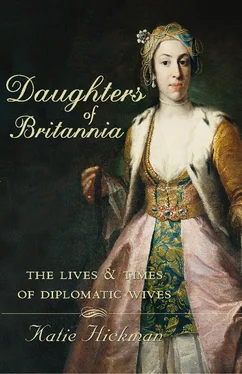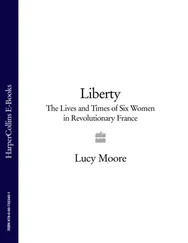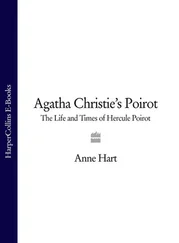Occasionally my mother would use the official embassy writing paper – thick sheaves of a creamy sky-blue colour, lavishly embossed with the royal crest – but it wasn’t really her style. For most of my school days she used the same big pads of plain white airmail paper, slightly crinkly to the touch, bordered in red and blue, which she bought in industrial quantities from an English stationer’s. Often I would carry her letters around with me in my pocket, unopened, for a whole morning, until I could escape somewhere private in which to savour them. Their fatness, their pleasing weight, their peculiar texture against my fingertips had an almost magical power to soothe. These letters carried news of my family, of course, but perhaps more importantly they described another world, and another way of life. They described another part of myself, in fact, which was as strange to my English friends as the land of the Jabberwock or the Yonghy-Bonghy-Bo.
I kept these letters, and many years later they were to be the inspiration for this book. Although I have quoted them here only occasionally, what they have given me is a strong sense not only of the value of the experiences they describe, but also of their fragility. One of my main aims in writing this book is to preserve them, and others like them, lest, like Lady Winchilsea’s, their stories should drift into oblivion.
The lives of the women described in this book represent a lacuna in history. While the experiences of their menfolk were recorded and preserved for posterity even as far back as the sixteenth and seventeenth centuries, * what these women saw or felt or did is unknown. Because, with a few rare exceptions, they were not involved in affairs of state, they were quite simply not considered important enough. Because they were women, their experience had no value, and even their presence often went unrecorded. To quote the well-worn feminist joke, the history of diplomacy is very much a ‘his-story’.
Of all the women whose experiences I have drawn upon in this book, Lady Winchilsea, who in 1661 made the long and perilous journey to Constantinople at her husband’s side, is the earliest. I am in no doubt that there were others before her, for the custom of sending resident ambassadors abroad, initiated by the Italians during the Renaissance, had begun to spread through the rest of Europe by the beginning of the sixteenth century, † but any records for them are almost impossible to find.
Even when we do have a fleeting glimpse of them (as in the case of the Countess of Winchilsea) their stories are tantalizingly elusive. Did Lady Winchilsea, like one of her more famous successors, Lady Mary Wortley Montagu, ever visit a harem or one of the imperial city’s glorious marble-domed hammams? Did she, like Mary Elgin nearly a century and a half later, go disguised in man’s clothing to watch her husband present his credentials to the Grand Seignior? What of the everyday practicalities of her life? What were the conditions she had to endure aboard ship? Did she have children whom she was forced to leave behind? Perhaps, like her contemporary Ann Fanshawe, she fell pregnant and gave birth thousands of miles from home. If so, did her child survive?
Although we will never know what Lady Winchilsea thought and felt when she arrived in Constantinople in 1661, remarkably, many accounts of the lives and experiences of diplomatic women have survived. Until well into the first half of this century many of them wrote letters home; these letters are often the sole record we have of them. A handful are already well-known names – Mary Wortley Montagu, Vita Sackville-West, Isabel Burton. The vast majority are not. Who was Mrs Vigor, gossiping from St Petersburg in the 1730s about the scandals and intrigues of the imperial court? Or Miss Tully, incarcerated for over a year in the consulate in plague- and famine-torn Tripoli on the eve of the French Revolution? We know almost no personal details about them (not even their Christian names). Nor do we know who their correspondents were, only that their letters were precious enough to someone, as my mother’s were to me, to have been safely kept. A great number of the sources I have used – collections of letters, private journals, or memoirs largely based on them – were never intended for public consumption at all: only a hundred or so copies were sometimes published through private subscription for family and friends. Why did they write these letters? No doubt they longed for news from home; but perhaps they also felt compelled to describe the circumstances of their lives abroad – so exhilarating, so strange, so inexplicable – to their family and friends. In Moscow in 1826 Anne Disbrowe enjoys the festivities which took place at the coronation of Tsar Nicholas I; in Peking, some fifty years later, at the heart of the Forbidden City itself, Mary Fraser takes tea with the legendary Chinese Dowager Empress Tzu Hsi; while at the turn of this century, during her seventeen long years in Chinese Turkistan, Catherine Macartney witnesses not one, but two full eclipses of the sun.
Others have more perilous tales to tell, of famines, plagues, tempests, earthquakes, wars, kidnappings, assassination attempts, and of the illnesses and deaths of their children. Even today – perhaps especially today – the world remains a hostile place for many diplomats. Their families, my own included, have often felt that the real substance of their lives is greatly, and at times almost wilfully, misunderstood. As one wife recently wrote in the BDSA (British Diplomatic Spouses Association) Magazine: ‘All Britons KNOW that diplomatic life is one long whirl of gaiety (they have seen the films and read the books)…’ Although this may be true for a few, most of the women represented here have very different stories to tell. ‘I shall never forget the utter despair into which the sight of my new home plunged me,’ wrote Jane Ewart-Biggs of her arrival as a young wife at her first posting in Algiers. From the outside their house – the central block of the old British hospital – seemed solid enough, but the interior was in a state of total disrepair, the paint flaking from the walls and doors hanging on single hinges. In the entrance hall a huge hole gaped through the ceiling ‘through which pipes and wires hung like intestines’. By the time her husband Christopher came home she was in tears. He, by contrast, was buoyed up by the fascinating day he had spent learning all about his new job. ‘It was then that I realised that the major problems arising from our nomadic life were going to affect me rather than him,’ Jane wrote, ‘and that the same circumstances creating political interest for him would make my life especially difficult.’ 1
Whatever the external circumstances, for the most part these are personal stories told from within. Their sphere is essentially domestic. Whether they are writing from Persia or St Petersburg, these women (mostly wives, but some daughters and sisters, too) describe the concerns of any ordinary Englishwoman: children, dogs, gardens, houses, servants, clothes, food. Politics, except on the occasions when they came into direct conflict with their lives, are only incidentally discussed. What they engage with instead is daily life. For the contemporary reader the women’s subjectivity has a peculiar veritas which is frequently absent from their husbands’ more distanced and perhaps more scholarly approach. What they do, brilliantly, is to describe what life was really like. It is this, more than anything else, which is their particular genius.
Who, today, would want to read Colonel Sheil’s ponderous ethnographic dissertation on Persia in the mid-nineteenth century? * The memoir of his wife Mary, however, contained in the same volume, while politically almost entirely uninformative, has a freshness and drama which remains undimmed by time. Mary vividly describes her agonizing 1,000-mile journey with three small children and an invalid husband through the Caucasus Mountains from Tehran to Trebizond on the Black Sea (from whence they were able to sail to England). She recorded with simple stoicism how they waded up to their knees through the freezing snow, eating only dry crusts and sleeping in stables: ‘I learned on this journey that neither children nor invalids know how much fatigue and privation they can endure until they are under compulsion.’ 2
Читать дальше












